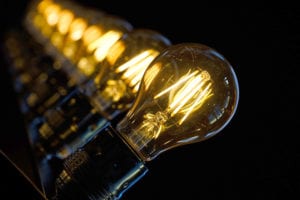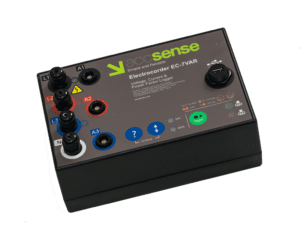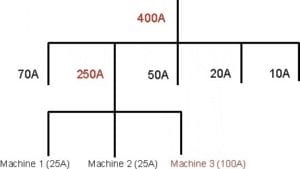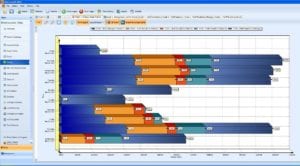
Accsense Electrocorder Measures Current/Voltage & Power/Energy
The aim of an energy audit is to reduce usage and improve performance. It is becoming a standard practice for large industrial locations as well as smaller operations. Many people don’t know how to perform one for their own facility. In this CAS DataLoggers Applications Note we’ll cover the basics of how to perform an Electricity Energy Audit using our Accsense Electrocorder range of data loggers. There are three key types of energy audits. ASHRAE identifies them as three levels. Level 1 is a relatively simple walk-through. Level 2 adds on an energy use survey and deeper analysis, and Level 3 includes a detailed survey and data logging. So, what is an energy audit? The goal of an energy audit is to get accurate energy data that shows you where your facility’s energy went over the period; which equipment, circuits, buildings or divisions consumed the energy; and exactly when this usage occurred.
How Do You Get Started?
Now that you know the answer to the question, “What is An Energy Audit?”, your first step is to look at the facility’s energy data and any other relevant information that you already have to hand. This data usually takes the form of utility bills, invoices and meter readings. Information like this can tell you a lot historically, but what it won’t tell you is:
• Where the energy went;
• Which equipment, circuits, buildings or divisions consumed the energy;
• When this usage occurred
To answer these questions, you need to record data over a period of time, and for this you’ll need a data logger.
 Why Should You Use a Data Logger?
Why Should You Use a Data Logger?
Accsense Electrocorder data loggers have several features which make them useful during the energy auditing process:
• Data Measurement–Identify opportunities to save energy
• Continual Recording – Identify performance issues with supply and equipment
• Data Analysis–Calculate the monetary value of future energy savings
• Reliable Operation–Low-cost investment for long term energy savings
• Analysis & Graphing Software–Included with every Electrocorder logger to allow you to input the system’s voltage when using a current-only logger. This lets you identify the power consumption over the logging period, assuming that the voltage is constant. You can also produce graphs as proof of savings. See an analysis overview of Electrosoft software.
Accsense Electrocorder samples every channel 16 times per cycle, a cycle being 16ms at 60Hz and 20ms at 50Hz. At the end of each averaging period, 3 quantities are saved for each channel: the True RMS average; the Max, which is the highest cycle value during the period; and the Min, the lowest cycle value. Electrocorder will record all the peaks and troughs which are one cycle or longer, enabling truly detailed metering.
Do You Have Circuit Diagrams?
Before you begin logging data, you’ll need to know the electrical layout of the system or premises to be audited. Ask an electrician to explain the wiring diagram for the premises. If you don’t have a circuit diagram, you should create one to use in the audit. The diagram will show you the various circuits and connections of your system, and in turn this may help you to determine the best logging points and where to get access for recording.
What Values Do You Need to Log?
While it’s true that to correctly measure power and energy you need to measure voltage, current, power factor and time, it’s also true that you don’t always need to go to those lengths to perform an energy audit. In fact, in many situations, you only need to measure current!
The voltage you receive from your utility is not constant: generally, consumers have no control over it. However these variations will be fairly cyclic over the period of a day or even a week, so in essence, you can treat voltage as a ‘constant’ meaning that there’s no need to record it. For the purposes of an audit or comparative test (before and after) you can rely on just current data. This makes it much easier for you to get started recording data. With the Electrocorder CT-3A Single and Three Phase Current Data Logger you don’t need a direct connection to voltage terminals–simply clip the current transformers (CTs) or Rogowski Coils around the conductors and press the data logger’s Start button to record.
In specific cases where you do need to log both current and voltage for a more detailed view, the EC-7VAR Three Phase Voltage and Current Data Logger is a cost-effective product designed to monitor one, two or three current channels, as well as one, two or three voltage channels. It allows you to monitor the loading and energy consumption of the installation. Power Factor recorded is the phase angle between L1 and A1.
How Long Should You Record?
In an energy audit there are two main approaches to data collection:
1. The first method is to start with the incoming power and record your facility’s total usage profile over a given period of time. Normally we recommend a minimum of a week. However, if you know that every day’s usage is going to be identical, then you can just log for one day on each of the nodes rather than for a week. Start working your way down each of the major circuits, getting a view of the profile, averages and peaks on each.

You will need some time to perform this logging exercise, generally a day or more, up to a week for each circuit that you want to log. For the small system above, it would take a minimum of 9 days, based on logging each of the nine labeled points for 1 day.
2. The second approach assumes that you have some knowledge of the demand and particularly where or what the big energy consumers are. In this case you go straight for those loads. For example in the diagram above, you may start logging items below the 150A point (that is directly on machines 1 to 3), to see where that 150A is going. In this instance Machine 3 is taking four times as much current as machines 1 and 2. This might be an actionable area for savings.
How Can You Prove The Results?
Accsense Electrocorder products include free Electrosoft software allowing you to define the voltage to plot power and energy, then upload recorded data via USB to a PC for analysis. If you log for a period of about a week, Electrosoft analysis software will extrapolate the data and give you estimated power/energy figures for a month, quarter and year. Keep in mind that it’s always wise to check the results against your bills to make sure there are no fundamental mistakes.
Likewise it’s always a good idea to document the energy audit. Your documentation should note where you logged the data and should also include a brief summary containing weather data, production data, and other business-related data over the logging period. All this will help you to correlate the information in future and spot factors which may have caused anomalies.

What Product is Right For Your Needs?
Current-only recorders:
EC-3A Single and Three Phase Current Data Logger (400A – 3kAac)
CT-3A Single and Three Phase Current Data Logger (0.5A – 400A)
Voltage & Current recorders:
EC-2VA Single Phase Voltage and Current Data Logger (300Aac/300Vac)
EC-7VAR Three Phase Voltage and Current Data Logger (Records voltage up to 500Vac & loads up to 3kAac, model dependent)
Where Can I Learn More?
ISO 50002:2014 is a new International Standard providing helpful information on energy audits for all types of facilities and organizations. The ISO 50002:2014
standard is published here.
For further information on our Accsense Electrocorders products, more answers on the question, “What is an energy audit”? or to find the ideal solution for your application-specific needs, contact a CAS Data Logger Application Specialist at (800) 956-4437 or request more information.

